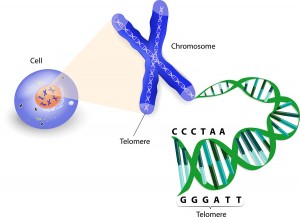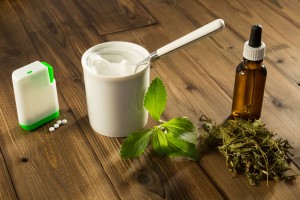At the 22nd Annual A4M Las Vegas Conference in mid December 2014 Pamela Smith gave a presentation entitled ”How To Preserve Your Memory At Any Age”. She gave a comprehensive overview of what you can do to prevent Alzheimer’s disease. The better we understand the causes of Alzheimer’s the more we can interfere with the biochemical processes that lead to Alzheimer’s or dementia. Various parts of the brain have different functions like pattern recognition, interpreting auditory and visual stimuli and so on. In the past researchers thought that after the brain development it would be stationary until we die. But they have now shown that instead the brain continues to develop even after the teenage years. New brain cells can develop as long as we live and new synapses, the connections between brain cells can form all the time.
A lack of sleep causes insulin levels to rise, which causes a lack of memory. Alzheimer’s disease has been termed diabetes type 3 because of this close connection of memory loss and uncontrolled blood sugar levels. In fact diabetics are three times more likely to develop Alzheimer’s disease.
Subunits of the brain and neurotransmitters
There are several subunits of the brain like the hypothalamus, thalamus, hippocampus and the amygdalae, which are important for normal brain function and memory. The hippocampus in particular is a major memory-processing unit, which indexes, constructs and rearranges memories.
Apart from the anatomy of the brain, neurotransmitters are important for the proper functioning of the various parts. Although there are more than 100 of them the most important neurotransmitters are acetylcholine, GABA, glutamate, dopamine and serotonin. Each of these neurotransmitters binds to only one specific receptor before a neuron sends a signal to the next. There is a decline in the speed of neurotransmission with age and also a memory decline. Compared to the memory in a young person a person at the age of 75 has a decline in memory function of about 40%.
Why do people experience memory decline?
Apart from genetic predisposition the majority of people who come down with Alzheimer’s disease do so because of neglecting the body and their brain. Neglecting elevated blood pressure by not treating it properly with medication will lead to vascular dementia. As already mentioned earlier hyperinsulinemia (too much insulin in the blood) from obesity, untreated type 2 diabetes and metabolic syndrome is another mechanism.
There is an association of lack of exercise with a higher risk of developing Alzheimer’s, so is insomnia and a lack of sleep (less than 7 hours per night). With aging there is often poor nutrition, lack of absorption of nutrients, inflammatory bowel conditions with poor absorption of nutrients and body inflammation. A significant portion of the population is deficient for various enzymes in the methylation pathway, which can lead to high homocysteine levels and the danger of premature heart attacks and vascular dementia. Psychological health also affects memory loss, as do depression and anxiety. Toxins like heavy metals, fuels, pesticides, solvents and fluoride can over time lead to memory loss and Alzheimer’s as well.
Lifestyle habits and Alzheimer’s
There are many lifestyles that cause memory loss: too much stress (from high cortisol levels that damage the hippocampus); smoking that damages acetylcholine receptors; chronic alcohol abuse leads to memory problems from the toxic effect of alcohol on brain cells, which in turn causes a disbalance of serotonin, endorphins and acetylcholine in the hippocampus.
Lack of exercise is an independent risk factor for the development of Alzheimer’s disease. Exercise increases the blood supply of the brain, strengthens neural connections and leads to growth of neurons, the basic building blocks of the brain. Mood-regulating neurotransmitters are increased (serotonin, endorphins).
Sleep deprivation leads to memory loss, but so does the use of aspartame, the artificial sweetener of diet sodas.
Sugar consumption and too much pasta (which gets metabolized within 30 minutes into sugar) causes oxidization of LDL cholesterol and plaque formation of all the blood vessels including the ones going to the brain. On the long-term this causes memory loss due to a lack of nutrients and oxygen flowing into the brain.
Hormone changes
A lack of testosterone in men and estrogen in women interferes with cognition and memory. For this reason it is important after menopause and andropause (=the male menopause) to replace what is missing with the help of a knowledgeable health professional.
Too much DHEA from stress can decrease memory, but too little DHEA from aging can also do this. Alzheimer’s patients have DHEA levels that are 48% lower than men and women of the same age who have normal memories. Pregnenolone is a precursor of DHEA, estrogen, progesterone and testosterone. Dr. Smith called pregnenolone the “hormone of memory in the body”. At an age of 75 most people have a 65% lower level of pregnenolone than a persons in the mid 30’s. Pregnenolone keeps your brain balanced between excitation and inhibition, helps you to cope with stress and gives you energy.
Ask for input by hormone specialist
But before you consider supplementing with a pregnenolone hormone level, this should be ordered by a knowledgeable health professional. Dosing can be tricky as too much pregnenolone can result in too much DHEA, estrogen, progesterone or testosterone.
Progesterone is manufactured inside the brain, spinal cord and nerves from its precursor, pregnenolone, but in women it also comes from the ovaries until the point of menopause. Progesterone is needed in the production of the myelin sheaths of nerves and it has a neuroprotective function. In menopausal women bioidentical progesterone is a part of Alzheimer’s prevention.
Melatonin is a hormone, a powerful antioxidant and a neurotransmitter at the same time. It helps in the initiation of sleep, stimulates the immune system and protects from the toxic effects of cobalt, which has been found to be high in Alzheimer’s patients.
Other factors contributing to Alzheimer’s
Any inflammatory condition can trigger destruction of neurons, so do the beta-amyloid proteins associated with Alzheimer’s. Contributory factors can be food allergies, disbalance of gut bacteria, recreational drugs (particularly ecstasy) and certain medications. Dr. Smith stated that the most common foods causing allergies that affect the brain are: sugar, wheat, dairy, eggs, shellfish, potatoes, beef, tomatoes, corn, coffee, peanuts, roasted soy beans and yeast.
Dr. Smith mentioned that these medications can affect memory: statins, sedatives, steroids, levodopa, muscle relaxants; antihypertensive drugs, antidepressants, antibiotics, anticonvulsants, anti-arrhythmic drugs, pain relieving drugs (analgesics) and antihistamines. If you are on any of these, you may want to discuss alternatives with your doctor. Dr. Perlmutter mentioned in Ref. 1 that statins interfere with brain function and can lead to Alzheimer’s.
Promoting brain health
Medication helps only to stall further memory loss for up to 6 months, so Dr. Smith said about medications only: “much research is still needed in this area”.
On the other hand she stated that many foods, vitamins and supplements in combination could improve memory and prevent the development of Alzheimer’s disease. She spent considerable time in the remainder of her talk on details regarding foods, vitamins and supplements.
Dr. Smith said that we need to eat foods that are rich in antioxidants like blueberries, apples, raspberries, blackberries and strawberries; cherries, cranberries, cooked kale, garlic, grapes, prunes, raisins and raw spinach. But at the same time she stressed that we cannot trust the food industry anymore, and we need to buy organic foods. She gave an example of the “dirty dozen” as defined by the environmental working group (contaminated fruits and vegetables).
Food intake also applies to portions:eat 5 to 6 smaller meals per day. Consume red meat only three times per week.
The brain needs fats like nuts and seeds: walnuts, almonds, pine nuts etc.
Fish also contains healthy omega-3 fatty acids and DHA. The problem with predator fish like tuna or swordfish is that they are contaminated with mercury. But wild salmon and mackerel are still OK. A good alternative is to supplement with pharmaceutical grade EPA/DHA omega-3 capsules. They are molecularly distilled, which means they are not contaminated with mercury or PBC’s and they are more concentrated; they typically contain 1000 to 1400 mg of EPA/DHA per capsule. One to two capsules twice per day (a total of 2 to 4 per day) would be a good anti-inflammatory dose.
Specific food recommendations
Use olive oil and coconut oil for cooking; avoid the omega-6 oils (safflower oil, grape seed oil, sunflower oil, corn oil to just mention a few). These latter oils, which are heavily advertised by the food industry, create too much arachidonic acid leading to body inflammation. Your brain is very sensitive to inflammation, which causes Alzheimer’s. For the same reason avoid deep fried foods and processed foods.
There is more you need to watch for: no food additives, no artificial food colorings, no preservatives, flavors and MSG. Be alert about the food industry’s alternative “language” or terminology for MSG: “natural flavor”, “yeast extract” etc.
Brain nutrients
Dr. Smith reviewed a long list of brain nutrients that support the brain in its metabolism and prevent the development of dementia and Alzheimer’s disease.
I will only highlight the most effective and established nutrients here.
DHA: It has been known since 1999 that Alzheimer’s patients are missing DHA in their system. Molecularly distilled fish oil with high omega-3 fatty acids (both EPA and DHA) is one of the mainstays of prevention of inflammation in the body and the brain. 2 capsules twice per day of the concentrated 1000mg to 1400 mg capsules is desirable to prevent Alzheimer’s disease.
Phosphatylserine (PS): This phospholipid is part of the membrane of brain cells and controls what nutrients enter into them. It also increases the neurotransmitters acetylcholine, serotonin, norepinephrine, epinephrine and dopamine. Dr. Smith mentioned that PS is naturally present in foods like brown rice, fish, soy and green vegetables (particularly the leafy ones). The daily dosage recommended by Dr. Smith is 300 mg (note: some people develop a bothersome, but harmless bitter taste in the mouth at this dose; in this case take a lower dose like 100 or 200 mg per day).
Other supplements like Ginkgo biloba, alpha lipoic acid and others
Ginkgo Biloba: It improves blood flow to the brain and counteracts shrinkage of the hippocampus with age. Dr. Smith recommends 60 mg to 240 mg daily.
Alpha Lipoic Acid: Alpha lipoic acid is an antioxidant, helps stimulating the sprouting of new nerve cells and nerve fibers. Take 100 mg of alpha lipoic acid daily for memory.
Dr. Smith recommended many other supplements, which I will not explain in detail here: B vitamins, vitamin E and C, carnosine, acetyl-L-carnitine, boron, ginger, coenzyme Q-10 (or CoQ-10), curcumin, vinpocetine, zinc, grape seed extract, blueberry extract, Ashwaganda, glyceryl-phosphoryl-choline, SAMe, huperzine A and DMAE.
Dr. Smith discussed the benefits of CoQ-10 supplementation and reminded the audience that “whatever is good for the heart, is good for the brain”. She recommended to read Dr. Perlmutter’s book from which this phrase was borrowed (Ref. 1).
Genetic factors
Dr. Smith pointed out that there are about 5 genes that have been detected that are associated with Alzheimer’s disease and in addition the apolipoprotein E4 (APOE4). About 30% of people carry this gene, yet only about 10% get Alzheimer’s disease. This shows you how important lifestyle factors are. Physicians call this epigenetic factors. The can suppress the effect of the APOE4 gene. She also stated that our genes contribute only about 20% to the overall risk of developing Alzheimer’s disease. This leaves us with 80% of Alzheimer’s cases where we can use the brain nutrients discussed above and exercise to improve brain function.
Conclusion
Don’t wait for Big Pharma to develop a magic pill. Follow the simple steps in combination that Dr. Pamela Smith talked about in her presentation: Exercise, have organic food to keep toxins out of your body and brain, replace missing hormones with bioidentical ones and take supplements that are known to be effective (link for male menopause). In other words provide the right environment for your genes to work properly without getting Alzheimer’s disease.
Reference
1. David Perlmutter, MD: “Grain Brain. The Surprising Truth About Wheat, Carbs, And Sugar-Your Brain’s Silent Killers.” Little, Brown and Company, New York, 2013.















